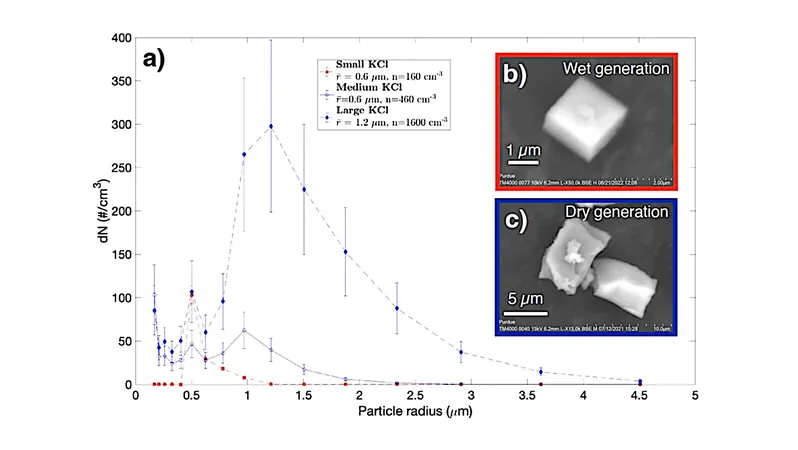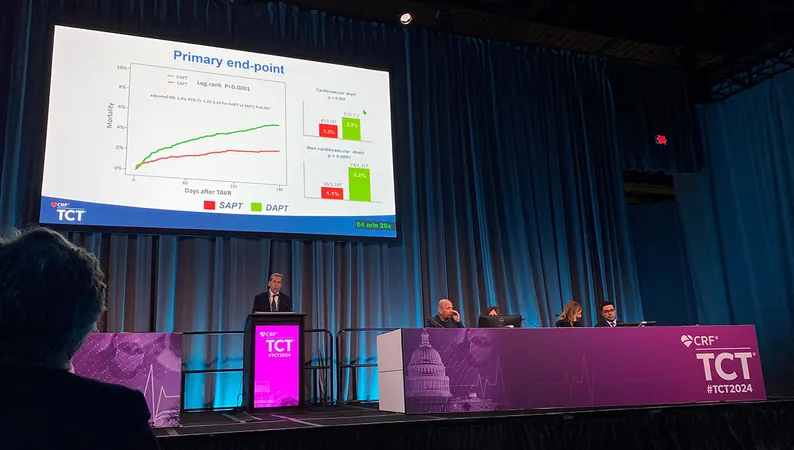
Unraveling the Mysteries of Exoplanet Clouds: New Insights from KCl Light Scattering Studies
2024-11-05
Author: Wei
Introduction
In the seemingly infinite cosmos, warm exoplanets are believed to host fascinating salt clouds that could reveal secrets about their atmospheres. However, understanding the optical properties of these clouds remains a significant challenge for scientists.
ExCESS: A Groundbreaking Apparatus
Enter the newly developed Exoplanet Cloud Ensemble Scattering System (ExCESS), a groundbreaking apparatus designed to measure light scattering intensity and the degree of linear polarization (DOLP) among KCl (potassium chloride) particles, serving as an essential analog for exoplanet cloud study.
The Science Behind ExCESS
ExCESS employs a polarized laser beam at 532 nanometers to delve into the complex world of particle scattering. By illuminating KCl particles that mimic cloud compositions of the warm exoplanet GJ 1214b, scientists collected comprehensive measurements across three particle size distributions.
Challenging Longstanding Theories
What's particularly exciting about these findings is how they challenge the longstanding Lorenz-Mie theory, which has predominantly been used to predict scattering properties of spherical clouds. The results reveal that Lorenz-Mie calculations significantly overstate the backscattering intensity for cubic and cuboid-shaped KCl particles and miscalculate the scattering behavior at mid-phase angles (approximately 90 degrees).
Implications for Future Missions
These discrepancies highlight the influence of non-spherical particle shapes on scattering properties, which are crucial for developing refined radiative transfer models of exoplanet atmospheres. With upcoming missions such as NASA’s Nancy Grace Roman Space Telescope and the Habitable Worlds Observatory, the implications of this research are profound.
A Glimpse at ExCESS Design
A top-down diagram of the ExCESS apparatus illustrates its innovative design: laser light is expertly manipulated by an electro-optic modulator to control polarization before entering the scattering region. An ND (neutral density) filter mitigates scattered light intensity, ensuring precise measurements as the photomultiplier tube (PMT) rotates around the scattering area.
Conclusion
With these advancements, the study of exoplanet atmospheres is poised for a revolution. As scientists continue to decode the light scattering characteristics of these clouds, we edge closer to understanding the enigmatic worlds beyond our solar system. What secrets could these salt clouds hold? The upcoming era of astronomical exploration promises to unveil mysteries that may reshape our comprehension of life beyond Earth. Stay tuned—exciting discoveries are on the horizon!




 Brasil (PT)
Brasil (PT)
 Canada (EN)
Canada (EN)
 Chile (ES)
Chile (ES)
 España (ES)
España (ES)
 France (FR)
France (FR)
 Hong Kong (EN)
Hong Kong (EN)
 Italia (IT)
Italia (IT)
 日本 (JA)
日本 (JA)
 Magyarország (HU)
Magyarország (HU)
 Norge (NO)
Norge (NO)
 Polska (PL)
Polska (PL)
 Schweiz (DE)
Schweiz (DE)
 Singapore (EN)
Singapore (EN)
 Sverige (SV)
Sverige (SV)
 Suomi (FI)
Suomi (FI)
 Türkiye (TR)
Türkiye (TR)